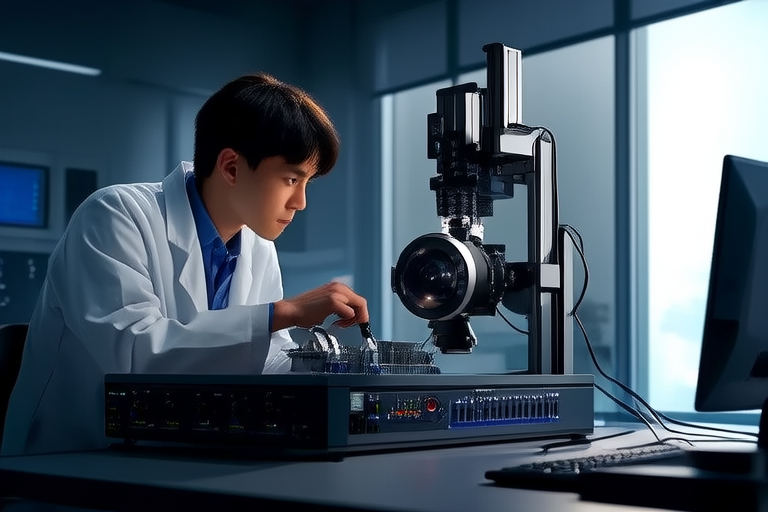“`html
The Impact of Computer Vision on Everyday Life: Innovations You Should Know About
Introduction
Computer vision is a field of artificial intelligence that enables machines to interpret and understand visual data from the world around them. By leveraging algorithms and deep learning techniques, computers can analyze images and videos to extract meaningful information, much like human vision does. This technology has evolved significantly over the past few decades, transitioning from simple image processing to sophisticated systems capable of recognizing objects, understanding scenes, and even predicting actions.
Today, computer vision plays a pivotal role in numerous aspects of our daily lives. From enhancing healthcare diagnostics to enabling autonomous vehicles, it is reshaping industries and improving efficiency. Its significance lies in its ability to automate tasks, improve decision-making processes, and create new opportunities for innovation. In this article, we will explore the transformative impact of computer vision across various sectors and highlight some of the most exciting innovations you should know about.
Healthcare
In the realm of healthcare, computer vision is revolutionizing diagnostics and treatment methods. Medical imaging analysis, once a labor-intensive task performed by radiologists, is now being enhanced by computer vision systems that can quickly identify patterns and anomalies in X-rays, MRIs, and CT scans. For instance, IBM Watson Health uses advanced machine learning models to assist doctors in diagnosing diseases more accurately and efficiently.
Robotic surgery is another area where computer vision is making significant strides. Surgeons can now rely on robotic assistants equipped with high-definition cameras and precision tools, guided by computer vision algorithms that ensure minimal invasiveness and maximum accuracy. Additionally, patient monitoring systems that utilize computer vision can track vital signs and alert healthcare providers to potential issues in real-time, improving patient care and outcomes.
Autonomous Vehicles
The development of autonomous vehicles (AVs) has been one of the most visible applications of computer vision. These vehicles rely heavily on sensors and cameras to perceive their surroundings, detect obstacles, and navigate safely. Object detection, lane keeping, and obstacle avoidance are all critical functions powered by computer vision technology.
Companies like Tesla, Waymo, and NVIDIA are at the forefront of this field, continuously refining their AV systems. Tesla’s Autopilot, for example, uses multiple cameras and radar sensors to create a 360-degree view of the vehicle’s environment, allowing it to make split-second decisions while driving. As the technology advances, we can expect even greater levels of autonomy and safety on our roads.
Retail and E-commerce
Computer vision is also transforming the retail industry, offering both consumers and businesses new ways to interact and transact. Facial recognition technology is being used to enhance security and personalize shopping experiences. For instance, Amazon Go stores employ computer vision systems to automatically track items as customers select them, eliminating the need for checkout lines.
Augmented reality (AR) try-ons and virtual fitting rooms are other exciting developments in e-commerce. Brands like Sephora and IKEA have implemented AR features that allow users to virtually test products before purchasing. Moreover, computer vision helps retailers manage inventory more effectively by automatically tracking stock levels and identifying misplaced items.
Smart Home Devices
The integration of computer vision into smart home devices is making homes smarter and safer. Security cameras equipped with facial recognition can identify authorized individuals and alert homeowners to unauthorized access. Smart lighting systems use computer vision to adjust brightness based on ambient light conditions or occupancy, optimizing energy usage.
Voice assistants like Amazon Alexa and Google Assistant are also benefiting from computer vision. These devices can now recognize faces and respond accordingly, providing personalized recommendations or controlling other smart home appliances. The convenience and enhanced security offered by these technologies are driving widespread adoption among consumers.
Entertainment and Media
Computer vision is playing an increasingly important role in the entertainment and media sector. Video games, virtual reality (VR), and augmented reality (AR) experiences are becoming more immersive thanks to advancements in computer vision. For example, VR headsets use motion tracking cameras to capture player movements and translate them into interactive gameplay.
In the film and television industry, computer vision is used for content moderation, ensuring that inappropriate content is flagged and removed promptly. Emerging trends include the use of computer vision to create hyper-realistic CGI characters and environments, blurring the line between live-action and animation. As these technologies continue to evolve, we can anticipate even more innovative and engaging forms of entertainment.
Conclusion
Computer vision has already made a profound impact on many aspects of our daily lives, and its potential is vast. From healthcare and autonomous vehicles to retail, smart homes, and entertainment, the applications are diverse and far-reaching. As the technology continues to advance, we can expect even more transformative innovations that will reshape industries and enhance our quality of life.
The future of computer vision holds exciting possibilities, including improved accessibility, enhanced personalization, and greater automation. By embracing these advancements, we can unlock new opportunities for growth and innovation across various sectors. Whether you’re a tech enthusiast or simply curious about how technology is shaping the world, staying informed about the latest developments in computer vision is essential.
“`


